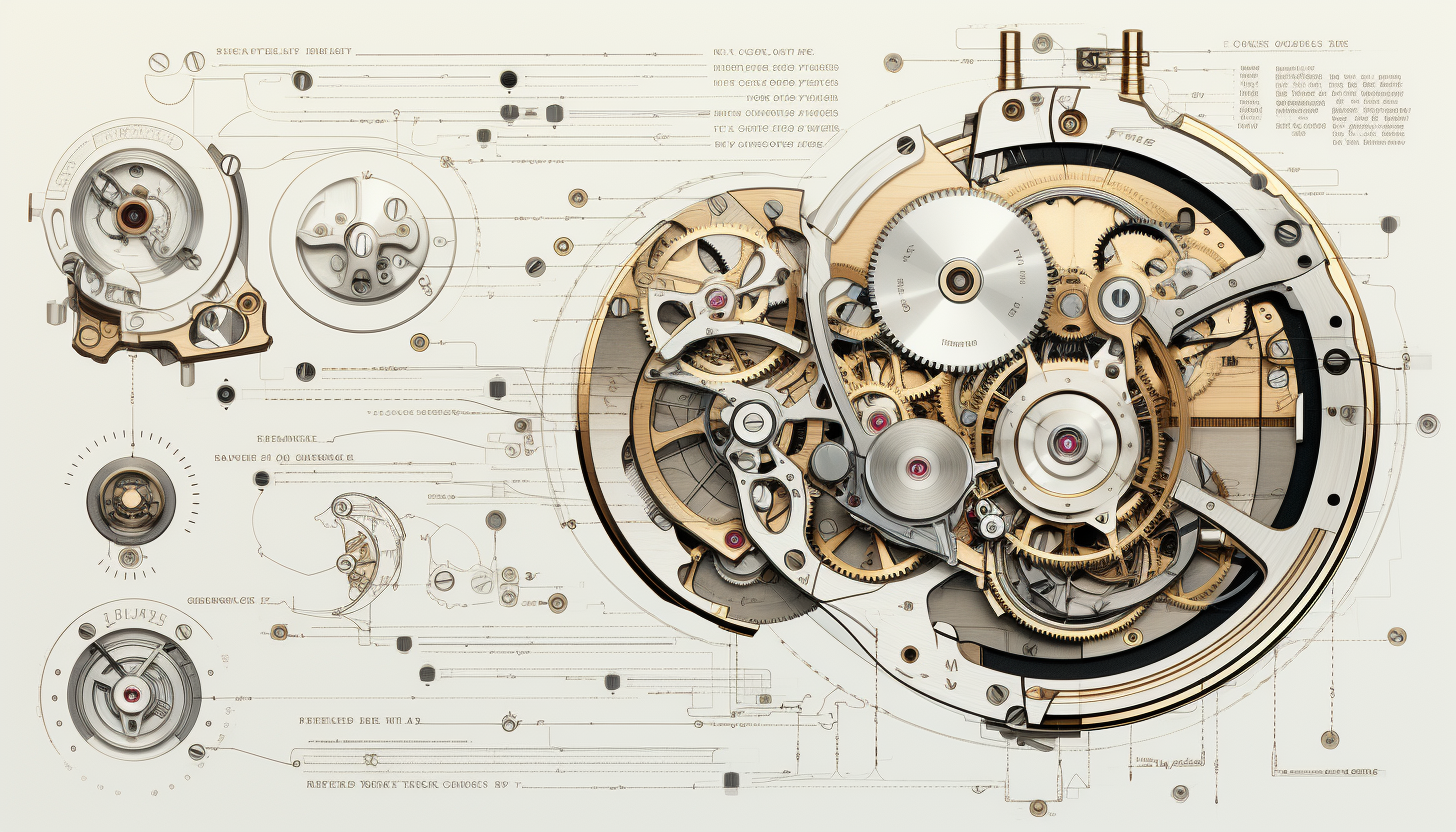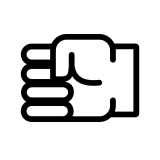This article is dedicated to helping managers understand the underlying logic of creating and documenting business processes. While numerous expert guidelines and methodologies are available online for process creation and documentation, they often focus primarily on the technical aspects of documenting individual procedures within a company. This approach can lead to the paradox of failing to distinguish a coherent process from a collection of procedures, resulting in operational chaos.
These methodologies, while not incorrect and certainly usable, often overlook the fundamental logic that is essential for proper process structuring. This logic is crucial as it simplifies our understanding of the various forms of process manifestation and offers clear guidelines for their development.
In the core business process, we describe the creation and delivery of products and services. We typically view the product in its material form and the service as the evident performance of the service. However, in the process of creating the product and service, they can manifest in other forms. This can lead to issues during documentation when the subject of the process at a specific stage becomes unclear. Such lack of clarity can result in errors in interpreting the creation of the product and service. Furthermore, the process may develop gaps, becoming unclear and illogical, leading to unnecessary business inefficiencies.
By adopting a flexible approach to thinking about the possible different forms of products and services in the process, we can overcome this problem. This document aims to assist in that regard.
Increments of products and services in the process
Every product and service must be created somehow. The creation of products and services is not random; it follows a predetermined process.
In this process, products and services are developed gradually, taking different forms along the way. This can be likened to biological metamorphosis.

Initially, products and services evolve from simple to increasingly complex forms until the final product or service is created and delivered to the customer.
During the process, transformations occur. These incremental changes, for example, convert raw materials, intermediate goods, and information from one stage to the next, gradually shaping the final product.
Conversion is the act of transforming one form or state of a product into another.
This transformed form or state represents an incremental version of the product or service.
In the above illustration, which is used as an analogy to demonstrate the development of a butterfly, the increments would be stages 1 to 6. In reality, the emergence of butterflies is a continuous process. Here, we have selected and presented only six key stages.
Similarly, product increments often occur in phases. It is important to recognize which phase should be considered an increment.
Note – In the following text, we will refer to both products and services collectively as “products.”
TaskPack / Product Increment / Process
“TaskPack,” in the context of Workanizers’ Processor & Tasker tool, is a unique method of grouping tasks to simplify and expedite daily work. Each TaskPack should yield a new product increment as its result.
This implies that in a process comprising chained TaskPacks, there are as many product increments as there are TaskPacks.
Identifying when a new product increment has been created is not always obvious. To recognize a new product increment easily, we must understand its types and forms.

Increments do not always manifest as physical objects. For instance, they often take the form of information.
- Intangible Final Increments. The final increment (end product) may be intangible. This is common in many types of services. (E.g., online credit card charging, using software via the web, such as Gmail, legal services, streaming services such as Netflix or Spotify, insurance, and so on.)
- Intangible Increments During Production. During the production of a product or service, there is always a stage where an increment appears not as a physical entity but in the form of information or intention. (For example, various planning, information on stock status, some quality control, purchase order, invoice, etc.)
Therefore, information can be an increment in the production of products and services. Information (whether digital, paper documents, verbal, etc.) is an integral part of the process, and we treat it as such. It is not an independent, separate process line, as some methodologies suggest.
2. Abstract and Concretized Increments
Abstract Increments
When we identify a customer’s or user’s:
- Need
- Desire
We consider these as the initial pre-increments. This is the case even if they do not have a specific product or service in mind at that moment.
For example, “I really want to eat something sweet.”
At this point, we should recognize the increment of our product or service. Without this very “early” increment, the production of the final product or service would never have started.
Concretized Increments
Then, the customer or user may (or may not) form an idea of a specific type of product or service. We regard this as a concretized increment. It can be:
- Generic. When the user or customer gets a clearer idea of their needs and desires, it becomes concretized into a generic product. For instance, “I would like some ice cream.”
- Branded. Moments later, the increment can be further concretized to a branded product that exists in the market. For example, “Where can I buy Frubis chocolate ice cream?”
3. Increments in Manufacturing and Service Production
The distinction between manufacturing and service businesses is often intuitively clear, as we usually focus on the final increment: goods or services. However, this distinction is not always so straightforward.
It is more beneficial to view the products of a business as either tangible or intangible, as introduced earlier in this document.
In manufacturing businesses, we always have tangible and intangible final products.
When purchasing a clearly tangible product, such as a car, we also receive accompanying services. These can include installment purchases, warranty, roadside assistance, replacement vehicles, insurance, free first service, etc.
In service businesses, we often have tangible and intangible final products.
In purchased services, tangible increments often appear in varying proportions. For instance, restaurants and cafes deliver meals and drinks; repair services often include various spare parts; telecommunications services come with mobile phones; health services include medications, and so on.
Conversely, there are purely intangible end-service products, like banking and insurance, education, psychotherapy, software, legal services, bookkeeping, fitness coaching, transportation etc.
Increments in Manufacturing Production
- Tangible (conversion of materials, sub-assemblies, some processing preparations, etc.).
- Intangible (information in the purchase order, invoice, market research, etc.).
In the stages of creating the final tangible product, increments at individual stages often have an intangible form.
For example, each purchase order for raw materials and other necessary materials to make the final product represents an intangible increment on the way to the final product.
An example of an intangible increment is ordering the transport of the increment or the final product itself.
Also, when compiling an offer, presentation, or engaging in marketing, any mention of the final product or media where the final product can be presented is considered an intangible increment. The invoice for the final product itself represents an increment of that product.
We need to maintain an open mind in understanding all the tangible and intangible forms that increments can take.
Increments in Service Production
In discussing process mapping in service (intangible) activities, we should bear in mind:
- In service production, the intangible final increment is created and delivered simultaneously.
- The TaskPacks in the process are considered service increments, as there is no tangible result.
Depending on the business type, the intangible final increment may or may not be associated with a tangible increment (e.g., in the restaurant business).

4. Final and Associated Increments
Final Increments
These increments represent the last stage of manufacturing or service production. They encompass the tangible product produced and/or the intangible service provided.
Associated Increments
Associated increments are those that accompany (usually) the main increment and are delivered together. They can be both tangible and intangible in any combination.
These increments are quite common.
From a marketing perspective, associated increments can be categorized into:
- Complementary
These are associated increments that, together with the main increment, form an inseparable whole. They are an integral part of the user’s increment. Without them, the main final increment cannot be delivered or used effectively. Examples include assembly, delivery to the address, training, food, drink, etc.
- Secondary
Secondary increments are not essential. They are often used in competitive marketing strategies, such as promo products, or used to enhance and emphasize greater customer and user satisfaction.
5. User Increments
These represent the final product and service increments from the perspective of the customer and user, known as the user increment. They encompass the previously mentioned final and associated increments that are accessible to the user.
There may be several other increments between the final and associated increments and the user increments. For example, we consider the final and associated increments as a product (such as goods in a warehouse). To make them available to the user, usually, some intangible or tangible increments need to be added. The same principle may apply to certain services (like credit card activation, for example).
6. Post Increments
Successful businesspeople don’t cease tracking and controlling increments once they are delivered to the customer and user. Their care and responsibility extend beyond this point.
As products and services are used and consumed, further metamorphoses occur, leaving an impact. This influences the user’s level of satisfaction. Examples include considering how we feel after receiving medical care (are we better now?), whether we enjoyed our lunch, if our car broke down again, or if we surveyed customers or users about the product and service.
Post increments are typically combined with pre-planned associated increments.
Conclusion
We have explained the concept of product and service increments in various forms, from tangible and intangible, abstract and concretized, final and associated, to user and post-increment. This concept contributes to understanding the fundamental logic of creating and documenting processes.
It is crucial to have an open mind regarding recognizing the forms that increments can have from the initial idea to the final product.
